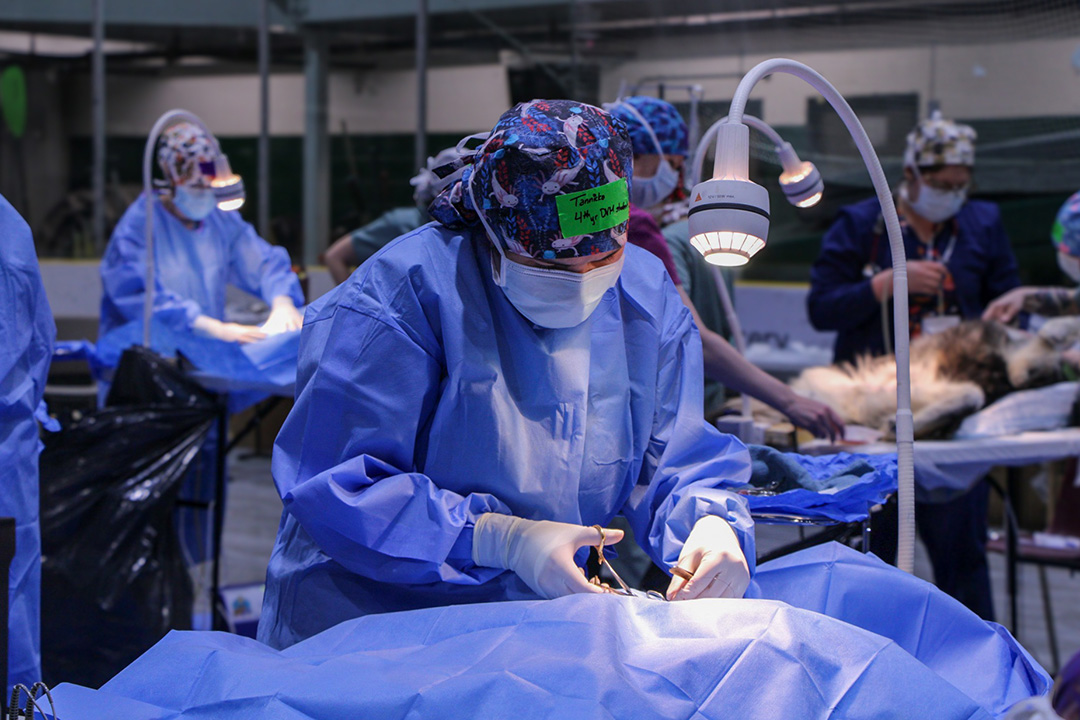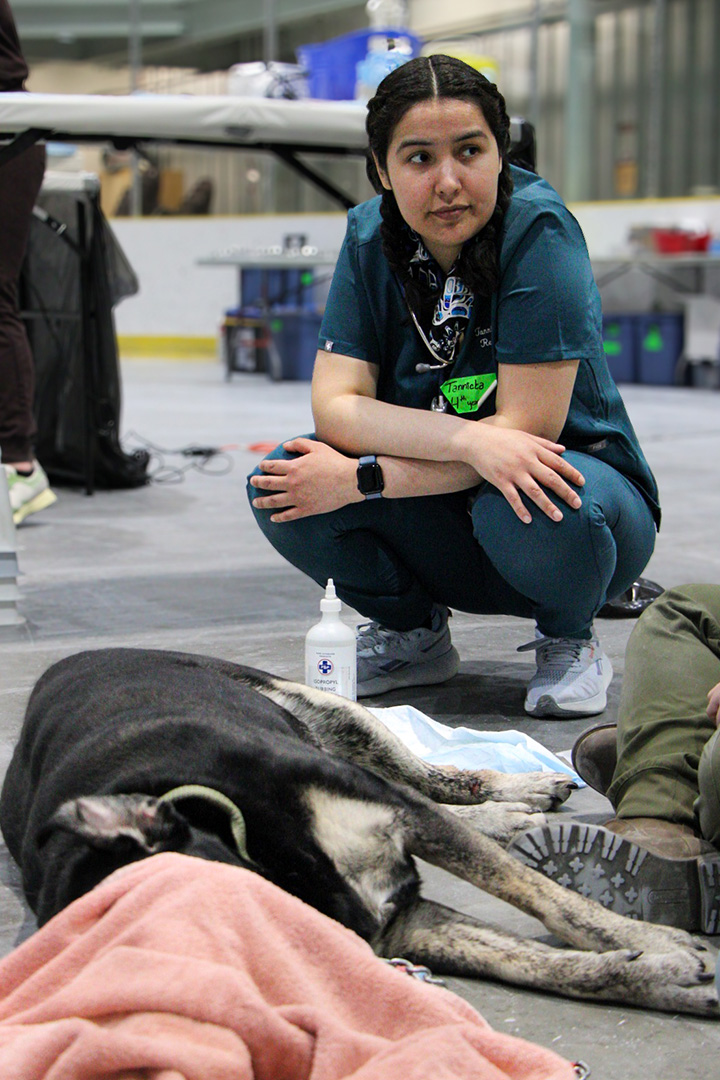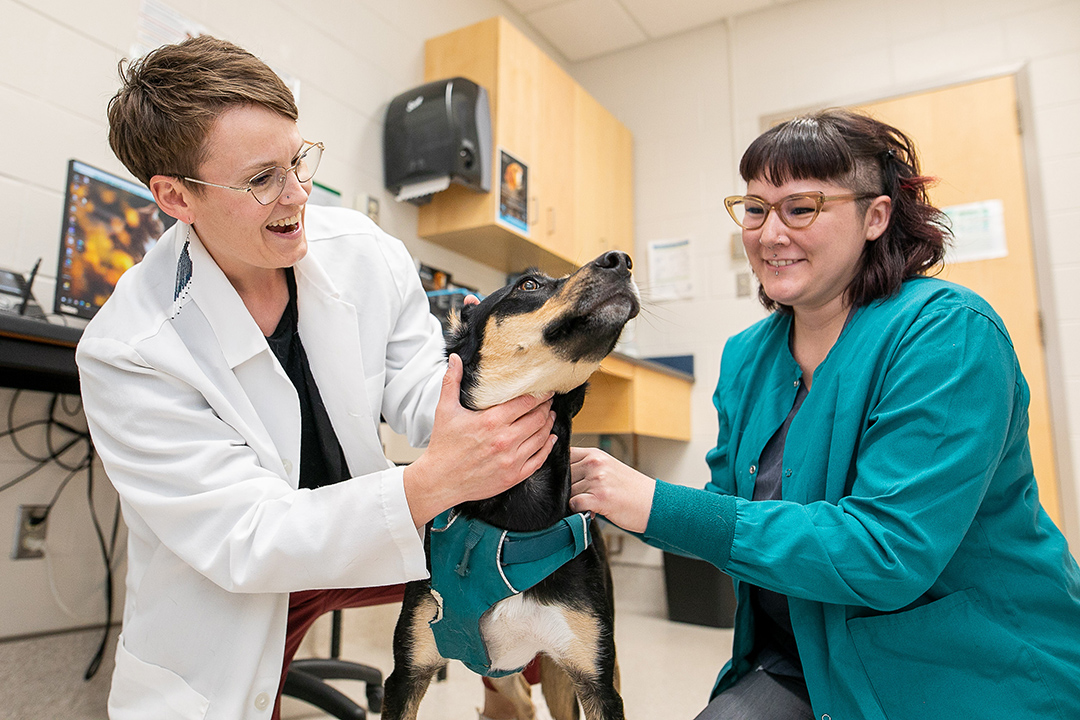
Access to veterinary care critical to health of animals and people
Snarling, yelping and teeth gnashing was all I heard on one picturesque afternoon at my home First Nation in northern B.C. I was 13 years old, and my five-year-old sister and I were playing outside of my Nana’s house when Grizzly, our beloved family dog, was attacked by a pack of roaming dogs.
By Tannicka Reeves
My heart dropped as I realized my little sister was only a few feet away from the frenzied attack. In another split second, I scooped her up in my arms and ran inside. Once she was safe, the heaviness of my decision set in. I knew I had done the right thing in saving my sister — but not being able to protect Grizzly shattered my soul.
My story isn’t unique, and it could have turned out much worse than it did. Grizzly, our family’s first soul dog, recovered from his injuries and lived to the ripe old age of 18. Thankfully, my sister only knows about Grizzly’s attack because we have told her about it — I’m so grateful that she wasn’t hurt and doesn’t remember this traumatic event as vividly as I do.
But countless Indigenous children are not so fortunate, and we often hear reports of kids being mauled by dogs in their own communities.
Many remote, low-income urban, and Indigenous communities in Canada have limited or no access to veterinary care. This inequitable access poses a risk to both animal and human health and should be treated with the same urgency as other crises in human health.
Phil Nichols, chief executive officer of the Toronto Humane Society, and his colleagues recently published Canada’s first-ever comprehensive analysis of access to veterinary care that examined trends from 2007 to 2020. Here is what they found:
- there are roughly 16.5 million pet cats and dogs in Canada
- the average number of clients per veterinarian has decreased by 30 per cent during the 13-year study period
- around 6.6 million pets (40 per cent) are without a primary care veterinarian in Canada
While the consequences of these gaps in access to veterinary care are most highly scrutinized and urgently noted in Indigenous communities, inadequate access affects Canadians and their animals nationwide.
Katara Chanin is a member of the English River First Nation and a registered veterinary technologist who is part of the Northern Engagement and Community Outreach (NECO) team at the Western College of Veterinary Medicine (WCVM). Based on her experience, Indigenous communities aren’t alone in facing this issue.
“The increased need and availability of community veterinary outreach initiatives in rural and urban communities — like Community Veterinary Outreach (CVO) and NECO clinics — is indicative of a more widespread issue,” says Chanin.

People everywhere are experiencing a lack of access to veterinary services — including residents of urban environments — for a variety of reasons, says Dr. Jordan Woodsworth (DVM, PhD), a veterinarian and director of the NECO program. And access isn’t just about limited finances. It’s also related to other factors/barriers:
- geography
- health literacy
- psychological safety
- past experiences of medical trauma
- animal behaviour
- transportation
- physical ability
- nature of human-animal bonds
- policies and practices in the veterinary profession
- veterinary workforce shortage
- veterinary professionals’ perceptions of the challenges associated with providing expanded access to care
Residents in northern Saskatchewan may also experience other barriers, points out Chanin. Common obstacles include the inability to access funds specifically for veterinary care, inaccessible roads to travel from communities to vet clinics, the presence of more pressing human health concerns in the community, and the closest vet clinic being four or more hours away.
Without access to veterinary services, animals can’t receive preventive care such as vaccinations, parasite control and spay-neuter procedures. A lack of basic health maintenance leads to the rapid spread of “infectious diseases, such as canine parvovirus and distemper virus, [that] can spread rapidly amongst unvaccinated groups of animals and can also pass between domestic dogs and wildlife,” says Woodsworth.
She adds that inadequate access is leaving “communities stuck with populations of companion animals that are unmanageable due to numbers, infectious disease, behaviour challenges and ongoing population growth secondary to lack of reproductive control.”
In addition to the animal health and welfare consequences of inadequate access, there’s an impact on human wellness.
“The inability for animal caregivers to access care for their pets when they are sick affects the mental and emotional health of the caregivers, which can affect overall human well-being,” says Woodsworth.
“Community members, such as the elderly and children, feel unsafe to simply walk around outside or play in their playgrounds outside at recess,” adds Chanin.
Addressing inaccessible veterinary care in northern remote Indigenous communities will take innovative thinking.
“The more we can test and document the value of creative solutions to inequitable access to care, the more we will become comfortable with these interventions … and the more likely we are to develop programs that suitably and sustainably address the needs of pet caregivers in varied contexts,” says Woodsworth.
Additionally, by addressing inequitable access to veterinary care in Indigenous communities, Canadians can meet their shared responsibility in acting to fully realize reconciliation. Woodsworth adds that efforts toward improving the health and welfare of animals are an act of reconciliation — but just providing access is not enough.
“If we don’t work with communities and centre their needs and priorities, we will miss the mark and may do more harm than good.”
Veterinary professionals can help address inequitable veterinary care by advocating for policy changes that support expanded access to care — such as expanding the roles of RVTs. Veterinarians can advocate professional regulatory bodies to “enable practices such as teletriage, telehealth, telemedicine and telesupervision, which could expand access to veterinary care while ensuring appropriate scope of practice and oversight for non-DVMs involved,” says Woodsworth.
Here are some actions that you and other Canadians can take to address inequitable access to veterinary care:
- learn about the inequities in access to care in your area
- find out what resources exist to support animal health and welfare (like NECO and CVO) where you live and contribute to those with time, money or material donations
- reach out to your local politicians at federal and provincial/territorial levels and let them know you are concerned about the impacts of inequitable access to care on human and animal health and welfare
- let your local veterinary professional regulatory body know about your concerns regarding inadequate access to care
